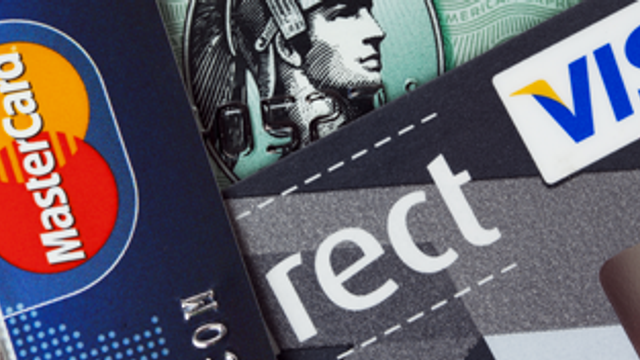When shopping online or making a payment over the phone, some retailers may ask for your credit card number.
But what is this number – and what are all the other numbers on your card?
How long is a credit card number?
Generally, when people use the term ‘credit card number’ they’re referring to the long number printed on the front of your credit card. This number is usually 16 digits long, but it can be up to 19 digits.
This number is unique to you and is created by your card provider. The first digit represents the provider:
- Mastercard numbers start with two or five.
- Visa card numbers start with four.
- American Express numbers start with three.
The number is produced using a mathematical system called the Luhn algorithm. It was invented by Hans Peter Luhn, an engineer working at IBM in 1954. This is now the internationally used standard for credit card numbers.
Does your credit card number change when you get a new one?
It depends on why you're getting a new card:
- If your card is lost, stolen, or compromised: Your card number will change to prevent fraud.
- If your card is expiring and you're receiving a replacement: Your card number usually stays the same, but the expiry date and CVV (security code) will change.
- If you're upgrading or downgrading your card: A new number may be issued, depending on the provider.
Always check with your card issuer to confirm what will happen in your specific case.
Do credit cards have sort codes?
No, credit cards do not have sort codes. Sort codes are used for identifying banks and branches in the UK’s banking system, mainly for bank accounts. Instead, credit cards have an Issue Identifier Number (IIN), the first 6 to 8 digits of the card number, which indicates the issuing bank.
What are the other numbers on my credit card?
Aside from your 16-digit credit card number, you’ll find other important numbers on your card:
- Expiry date – This shows when your card will no longer be valid.
- CVV (Card Verification Value) – A 3-digit number on the back (or 4 digits on the front for Amex), used for security when making online or phone purchases.
- Issue number (sometimes found on older cards) – Previously used by some banks to track reissued cards, but it's less common now.
Each of these numbers plays a role in keeping your card secure and ensuring transactions are processed correctly.
Valid from/expires end
It is also common for some credit cards to have a valid from/expires on date printed on the cards.
The valid from date is the month and year you opened your credit card, for example 02/13 for February 2013. Typically, a credit card is issued for two to five years and then renewed. In this case the expiry date would be 03/15– one month is added on to the end date to allow time to renew.
If your card has been renewed, your new card will have an amended start date, changed to the renewed date, i.e. 03/16 for March 2016. This is two to five years after you first took out the credit card and with a new end date of 04/19.
Issue number
There are some card providers that place an issue number on their cards.
An issue number refers to the number of cards that have been issued to the card holder. For example, if you renew your card after it expires, the original card will have the number 1 as the issue number, and the newly renewed card will have number 2 as the issue number. This will also happen if you lose your card and request a new one.
Card Verification Value number
Retailers sometimes ask for the CVV number on your credit card when paying for items over the phone or online. This can also be referred to as CVV2.
CVV stands for ‘Card Verification Value’ and it is a security feature to reduce fraud. This number is most commonly found on the back of the card at the top right-hand corner of your signature strip and is usually three digits long. There may be up to seven digits in total, but it’s the last three which are used as the CVV.
Never share your CVV with anyone unless you’re making a trusted payment, as fraudsters can use it to make unauthorised purchases.
We hope this has cleared up the mystery of what all those numbers on your credit card mean.
Fiona is a personal finance writer with over 7 years’ experience writing for a broad range of industries before joining Ocean in 2021. She uses her wealth of experience to turn the overwhelming aspects of finance into articles that are easy to understand.
![Email icon]()
Become a money maestro!
Sign up for tips on how to improve your credit score, offers and deals to help you save money, exclusive competitions and exciting products!
Find this useful? Share it with others!









